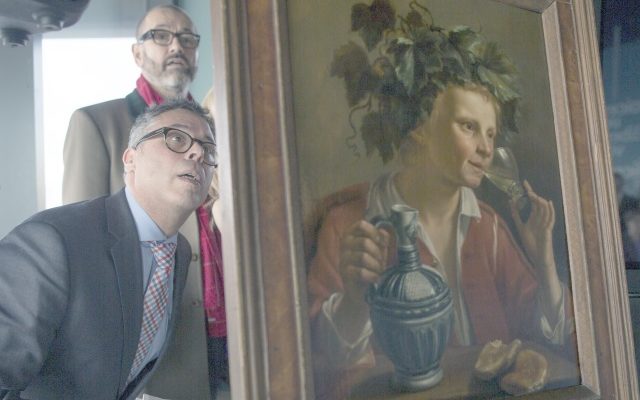A Jewish family regained ownership of an exquisite painting stolen by the Nazis eight decades ago.
Some 80 years ago, the Nazis forced prominent German Jewish art gallery owner Max Stern to sell his family’s roughly 400-piece collection before he was exiled from his country.
FBI agents on Wednesday returned one of those works, a 17th-century oil painting by a Dutch master, to representatives of the Dr. and Mrs. Max Stern Foundation during a ceremony at the Museum of Jewish Heritage in New York.
The recovery of Jan Frans Verzijl’s “Young Man As Bacchus” marks the 16th piece of Stern’s collection that investigators have been able to return to the foundation since recovery efforts began in the late 1990s.
While the painting had “survived several generations of exile,” it was seized by agents at a New York City art fair in 2015 after Italian gallery owners unaware of its past consigned it for sale, said Michael McGarrity, who heads the FBI’s New York field office.
Systematic Nazi Theft
In 1936, the Nazis forced scores of Jews like Stern to liquidate their assets, including art, at a fraction of their value, an act that US courts have since ruled amounts to theft.
The Nazis organized looting of European countries during the time of the Third Reich. Nazi plundering occurred from 1933 until the end of World War II, particularly by military units known as the Kunstschutz.
In addition to gold, silver and currency, cultural items of great significance were also stolen, including paintings, ceramics, books and religious treasures.
There is an international effort underway to identify Nazi loot that remains unaccounted for, with the aim of ultimately returning the items to the rightful owners, their families or their respective countries.
Many Jewish families have fought, or are fighting, to reclaim ownership over family heirlooms that are currently held by museums and other institutions around the world.
Recovering the art has been a painstaking process, in no small part because the art world is notoriously secretive and many current art owners inherit pieces from older generations, sometimes unaware of their provenance, experts said. Laws recognizing the theft also vary among countries, and artwork sometimes doesn’t emerge into public view for decades, they explained.
The state’s Department of Financial Services has a six-person Holocaust Claims Processing Office that tracks down art, insurance claims and bank accounts raided by the Nazis. Maria Vullo, the department’s superintendent, said the latest painting’s recovery “is but a small symbol of justice to those who suffered in the unspeakable horrors of the Holocaust.”
Stern was exiled in December 1937 and eventually made his way to Montreal, Canada, where he became a prominent art dealer.
Upon his death in 1987, he bequeathed his assets, including ownership of recovered artwork, to the foundation and its three beneficiaries: Concordia and McGill Universities in Montreal and the Hebrew University of Jerusalem in Israel.
By: AP and World Israel News Staff





